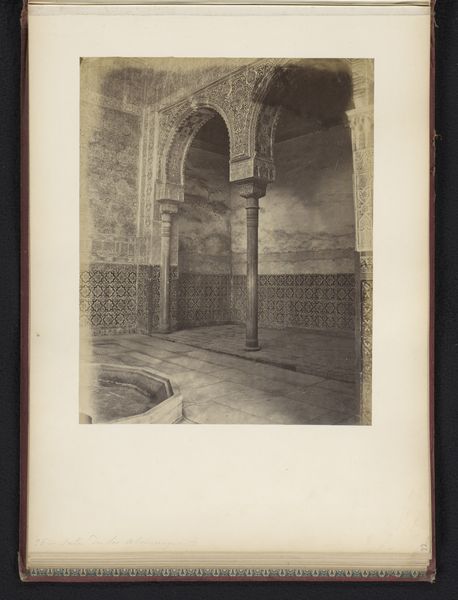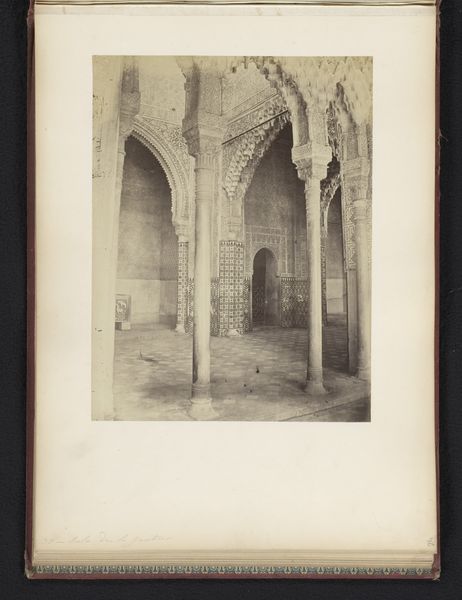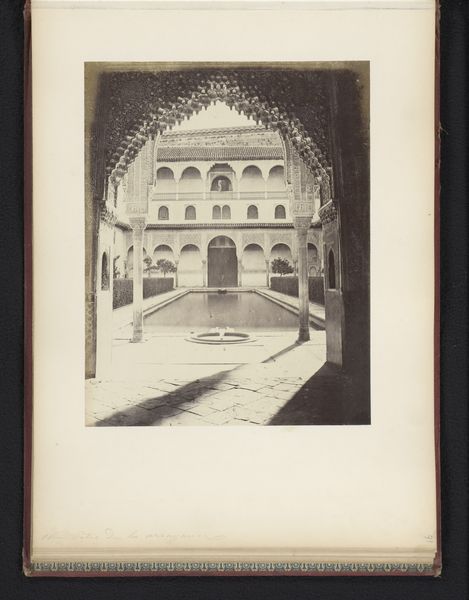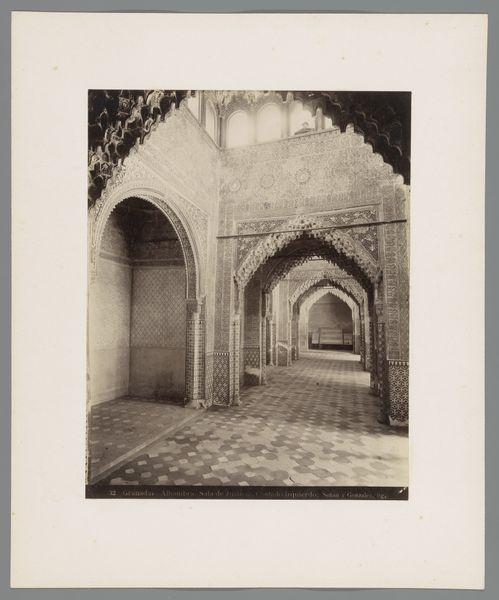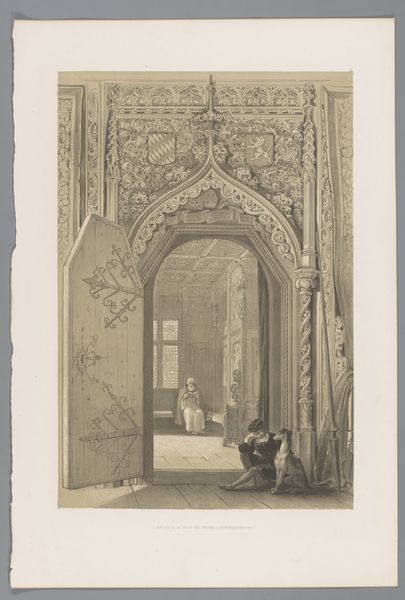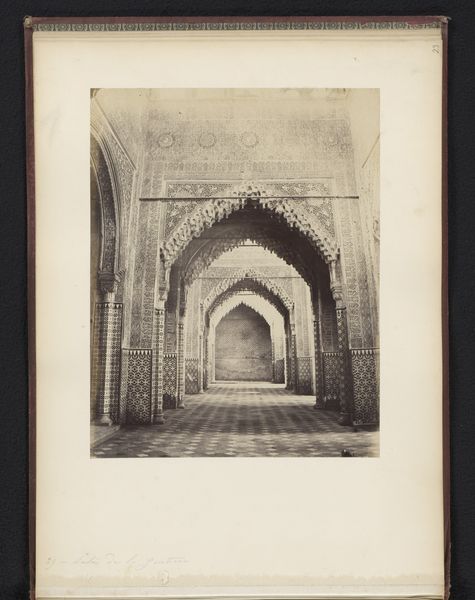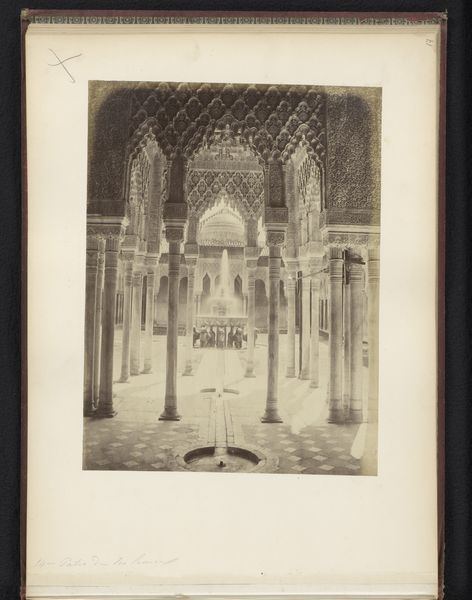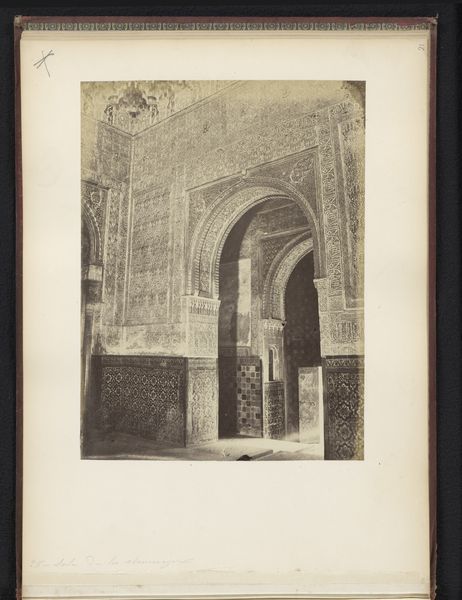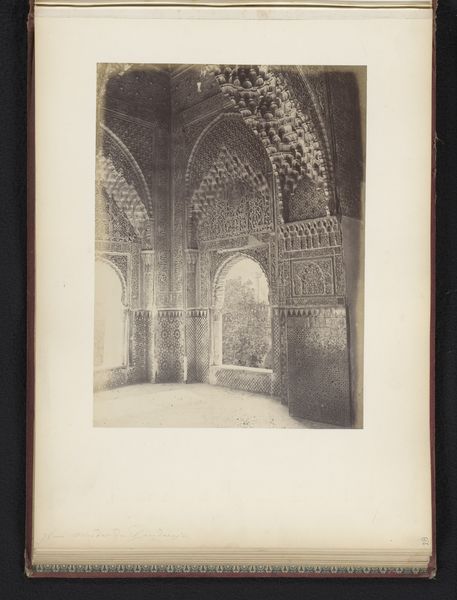
photography
#
landscape
#
photography
#
cityscape
#
islamic-art
Dimensions: height 276 mm, width 207 mm
Copyright: Rijks Museum: Open Domain
Curator: This photograph, attributed to Étienne Neurdein and created around 1880 to 1900, captures the "Interior of the Sidi Boumediene Mosque in Tlemcen". Editor: The arches create a stunning tunnel of repeated forms. But it's quite austere. A rather solemn space. What draws you in? Curator: The photographic process itself fascinates me here. Consider the technical skill required to capture the light and intricate details of the mosque’s construction with the limited materials available at that time. Think of the labour to prepare the shot, expose the plate, develop it… It reveals a moment of cultural exchange mediated by photographic technology. Editor: The symbolism seems much richer to me. Notice how the photographer carefully placed the figures; their dress signals particular roles or perhaps religious identities. The lamp further emphasizes the symbolic representation of light, a symbol of divine presence in Islam. And observe the repetition of the arch itself, the architectural construction reflecting the repeated idea of an entrance or a pathway in religious or symbolic traditions. Curator: I see them as simply laborers; they probably maintain the space. This reading of symbolic intent could just obscure real labour. Were these people free, or enslaved, what was the economic relationship here? Those considerations seem pertinent. Editor: You make a fair point about not losing sight of the sociopolitical climate. I do still think about what is remembered through images like these: a visual record of faith. Beyond documenting space, what ideas did Neurdein hope to convey with this work? How would someone of Islamic faith have received it versus, say, a European viewer? Curator: These buildings become commodities themselves through images such as this one, as well as the clothing worn within, and are re-presented for the viewer, stripped of function and the labor that creates and maintains them. This is how such beautiful places become part of someone else’s experience. Editor: Seeing that labor in turn enriches how we view and approach it. What layers have we uncovered in this space and frame, wouldn’t you agree? Curator: I'm intrigued by the different methods of material access and by the weight you give to its layered symbolism. Together we were able to expose, both figuratively and literally, quite a few things today.
Comments
No comments
Be the first to comment and join the conversation on the ultimate creative platform.

